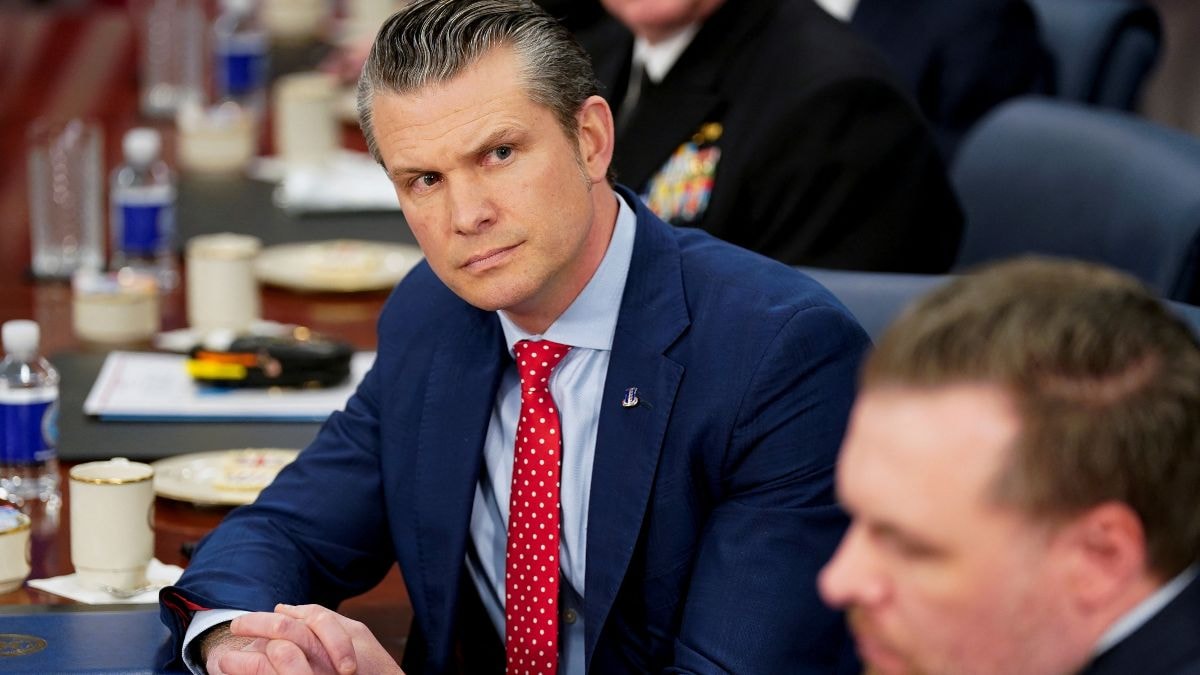Ed Lotterman: What if the Fed set a trap for Trump?

If one understands the history and functioning of the Federal Reserve system, one must wonder if Jerome Powell’s recent remarks in Chicago were not just careless, but instead carefully premeditated? What if his speech was the bait in a premeditated trap for an ill-informed president known to have zero capacity for self-control? The new administration’s wholesale firings violate a slew of laws, the Civil Service Act, the Administrative Procedures Act and the legislation setting up sundry quasi-independent commissions with their own five- or seven-member boards. In any single set of firings, people who were harmed can file for redress in federal court. But that is a daunting challenge. It takes a lot of money. Law firms are gun shy, not wanting to offend a patently vindictive highest official. And exactly how vital an issue are details in federal personnel management regulations? Trump renews attacks on Federal Reserve Chair Powell, accelerating US market slide. But the Federal Reserve system is different in all important ways. The Board of Governors was created by Congress in the Federal Reserve Act of 1913 that was greatly amended in 1935. The central issue in all of this was to have an effective central bank that was free of control by either political officials or Wall Street. The 1913 Act established a set of autonomous Federal Reserve District Banks, each as a legally private entity incorporated in the state where located. This was precisely to placate the often radical populists of early 20th century America, now seen as forebears of Trump’s MAGA movement. The Fed, despite the enmity it draws from this group, was created, in large part, as a bulwark protecting MAGA interests from political and financial elites,. Employees of these district banks are not government employees. They are categorized by the U.S. Labor Department as banking and financial workers. They do not have civil service protection, mandated veterans’ preference or any other trapping of federal employment. Their officers, unlike those of the Board of Governors in Washington, are not subject to the salary caps that apply to members of Congress, federal judges or generals. So each of the 12 district bank presidents earns some multiple of Jerome Powell’s $226,300. Thus no one, other than the nine-person boards of directors of each district bank, can tell their president and other officers what to do. No federal official in Washington has any standing to require these banks to take or not take actions like filing suits in federal court. Each of these banks is legally autonomous within the complex system of 12 banks and the Board of Governors. That system is in turn autonomous within the federal government. Each bank has a legal mandate to supervise safety and soundness of depository institutions, manage complex payments systems moving tens of billions of dollars daily and enforce consumer protection. Each also plays a role in establishing monetary policy for the country as a whole. Legally these districts are not part of the federal government. But to do their jobs correctly, the 12 district banks need the coordinating actions of the Board of Governors and its staff. So they have a vital interest in its statutory operation. Moreover, they set their own budgets and do not depend on any congressional appropriation. And they employ dozens of staff lawyers. So they unquestionably have legal standing to challenge a politically motivated firing of any Governor in violation of the Federal Reserve Act. There is no budget constraint. They have in-house legal staff and established connections with private law firms of all specialties. And there are many reams of legislative history proving that insulating the Board of Governors from presidential or congressional interference was not some legislative frill, but rather the core principle underlying a complex structure. Yes, presidents name Fed governors. These must be confirmed by the Senate. There are seven of them and each, barring resignation or death, is appointed to a 14-year term. Terms begin on Feb. 1 of even numbered years. So a president inaugurated in January of an odd-numbered year could never, barring resignation or death, nominate more than three governors even if the president served two terms. Three governors are purposely only a minority on a seven-member board. This, together with the specific clause that no governor may be fired “except for cause” are the carefully legislated means to accomplish the necessary end of having a money supply free of political control. No federal court at any level will be able to deny this. So what if key leaders in the 12 banks as well as at the board of governors decided to end interminable White House browbeating. Perhaps immediately make push come to shove with the following scenario. Powell, savvy Board Chair with a Princeton BA and a Georgetown JD who has rotated between Wall Street, the U.S. Treasury and the Federal Reserve for over 40 years, writes a low-key, but pointed 600-word speech. Knowing beforehand the questions his interlocuter for the Q&A will ask, he plans his answers accordingly. Eschewing usual Fed waffling, he openly predicts that Trump tariffs will boost inflation and depress output. Going entirely beyond his purview, he gratuitously opines that the GOP’s proposed budget deficit solution for 30 years is flawed and will fail. The trap has been baited. The president has been jabbed in the gut with a sharp stick. Trump reacts angrily, makes threats, and hears his advisors’ urgings of patience. Initially holding back, he rises at 2 a.m. a few days later and sends out an angry post firing Powell. All news outlets report his decision. Pundits opine, markets fall into turmoil. However, on the next business day, several Federal Reserve district banks, including New York, Chicago and San Francisco, jointly petition a federal court to enjoin Powell’s firing. The filing seems remarkably well drafted for such a short time! It clearly lays out how and why immunity from political control is at the very core of our nation’s central bank. As the White House appeals at each level, the Fed banks file increasingly detailed briefs refuting whatever arguments inexperienced and demoralized Justice Department lawyers slap together. Bankers’ associations, consumer federations, retired chairs of the Senate banking committee join friend-of-the court briefs. When it gets to the Supreme Court, an amicus brief jointly written by conservative federal judge J. Michael Luttig and Harvard constitutional scholar Lawrence Tribe helps carry the day. The justices are convinced. Even Clarence Thomas joins his colleagues in a unanimous, terse and crushing decision in favor of the Fed plaintiffs.. The upshot? Trump gets a very public judicial spanking, just as he runs into increasing headwinds on many fronts. Powell stays on as Chair until the end of January. Dr. Adriana Kugler, whose term ends the, is preplaced by Trump nominee Kevin Warsh. Powell graciously cedes the chair to Warsh, but stays on as a board member for the two years in his term, denying Trump the ability to fill a second slot. Monetary policy continues to be made as intended by wiser Congress a century ago. St. Paul economist and writer Edward Lotterman can be reached at ed@edlotterman.com.



















